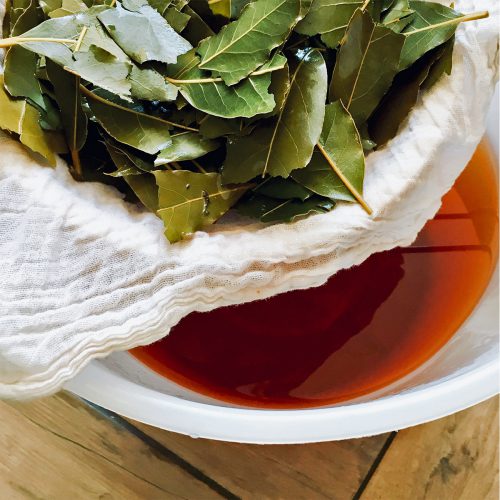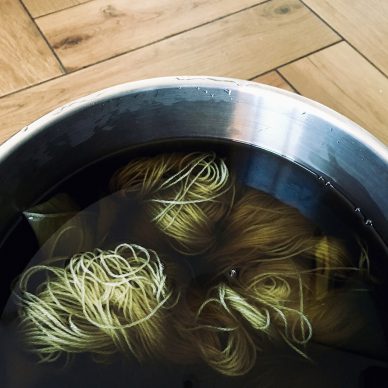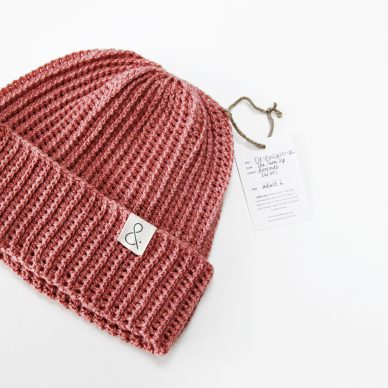You currently have no items in your cart ...
Continue shoppingNatural Dye


Process
I hand dye all the merino wool, using naturally sourced plant or food waste dyes. Each dye batch is an experiment, yielding different tones and shades, depending on the quantities and season.
These are either foraged from woodland where I live in Surrey, UK or rescued from my kitchen waste.
Dye stuff is soaked in my dye pot, and then begins a process of being heated up, simmered and cooled, to extract the colour.
Then the dye stuff is sieved out, leaving just the dye water behind. At this stage there should be an indication of what colour the wool dye to...but not always.
When it is ready, pre-soaked undyed merino wool is added to the pot and heated up, simmered and cooled, carefully moving the fibres continuously to ensure an even colour. I usually like to leave the fibres in the pot overnight, to establish a lasting colour.
Wool is then washed with a pH neutral soap to remove any excess dye and to clean the wool.
Lastly it is left for a few days, until all the fibres are dry, and it is ready to work with.
It is a long process, but one I feel is worth it!

Dye Batch Codes
Each piece is labelled with a dye batch code, to denote its unique colour reference. Firstly the weight of wool is referenced: either LW (Light Weight) or MW (Medium Weight).
After that there is a 3 digit number, for the dye batch code. I only ever dye one weight of wool at a time (i.e. Avocado LW001 is not the same dye batch as Avocado MW001).
If you have any questions about dye batches, do not hesitate to get in touch.